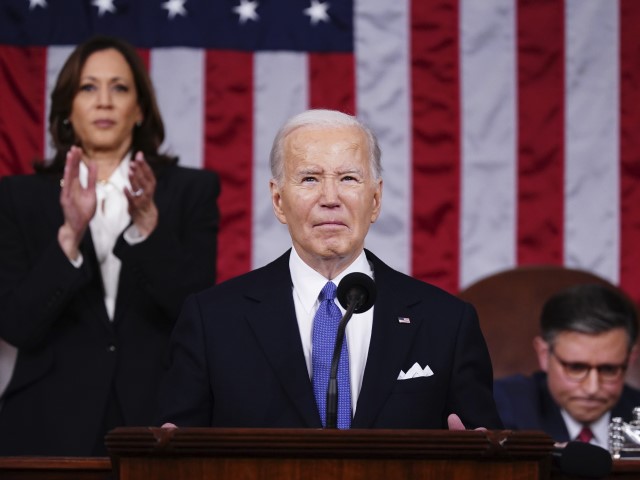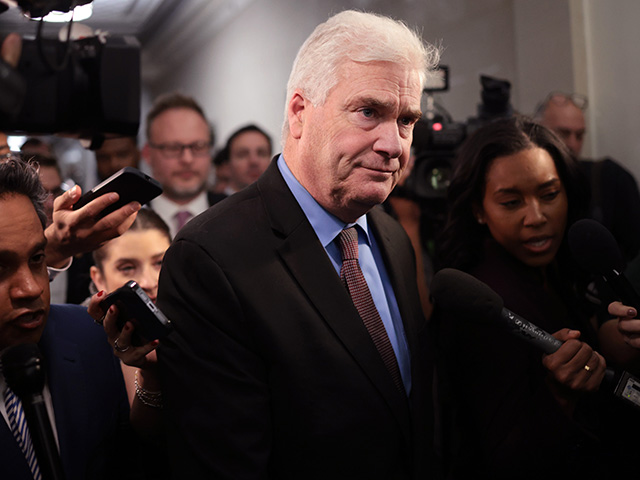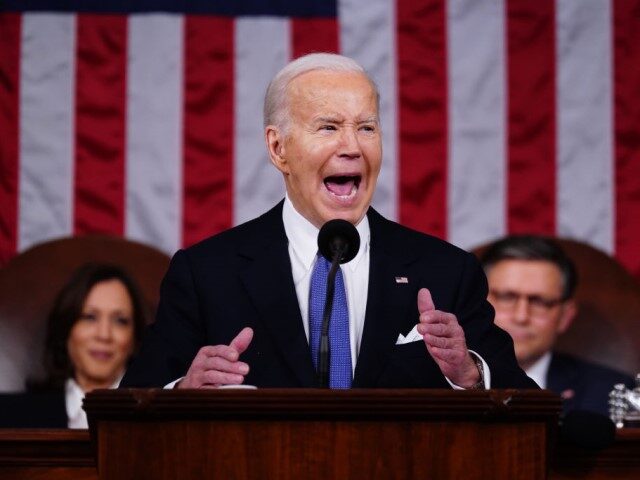House Majority Whip Rep. Tom Emmer (R-MN) suggested this weekend that Democrat President Joe Biden’s overtly political State of the Union address may have disintegrated the tradition of presidents being invited to deliver the annual speech before the House chamber.
While Republicans, including Emmer — who has endorsed former President Donald Trump, the presumptive GOP nominee in 2024 — hope Trump defeats Biden in November, if somehow Biden comes back and wins the election this year, Emmer said that House Republicans might not welcome Biden back for a State of the Union address next year.
“That was about the most divisive State of the Union — I wouldn’t extend him an invitation next year, if that’s what we’re going to get,” Emmer said in an interview with Axios published on Sunday.
This may set things down a slippery slope, too, whereby Republicans do not invite Democrat presidents to give a State of the Union address and vice versa in divided government.

President Joe Biden delivers the State of the Union address to a joint session of Congress at the Capitol, Thursday, March 7, 2024, in Washington. (Shawn Thew/Pool via AP)
In Biden’s speech, he attacked Trump more than a dozen times — repeatedly calling Trump “my predecessor” throughout the speech. Biden also laid out an aggressively leftist agenda replete with tax increases, more spending, radical border and immigration policies, and even for sending U.S. military forces into Gaza to build a port to send aid there. Biden, in addition, regularly attacked the Republicans in the chamber.
Nonetheless, Emmer’s argument extends even beyond Biden continuing as president and said that Congress should reconsider welcoming a president to deliver a speech to give their State of the Union update to Congress. For many years throughout U.S. history, a State of the Union address from the president to Congress just simply did not happen. In fact, while George Washington — the nation’s first president — did address Congress in person, it was not until President Woodrow Wilson in 1913 that presidents began appearing in person before Congress to give what has become known as the State of the Union address.

U.S. House Majority Whip Tom Emmer (R-MN) speaks to reporters as he leaves a House Republican candidates forum on October 23, 2023, in Washington, DC. (Win McNamee/Getty Images)
“Since Washington’s first speech to Congress, U.S. Presidents have ‘from time to time’ given Congress an assessment of the condition of the union. Presidents have used the opportunity to present their goals and agenda through broad ideas or specific details. The annual message or ‘State of the Union’ message’s length, frequency, and method of delivery have varied from President to President and era to era,” the White House website from the George W. Bush administration said, explaining the history of the address. “For example, Thomas Jefferson thought Washington’s oral presentation was too kingly for the new republic. Likewise, Congress’s practice of giving a courteous reply in person at the President’s residence was too formal. Jefferson detailed his priorities in his first annual message in 1801 and sent copies of the written message to each house of Congress. The President’s annual message, as it was then called, was not spoken by the President for the next 112 years. The message was often printed in full or as excerpts in newspapers for the American public to read.”
Emmer seemed to suggest that Congress might do well to return to that model of doing business, given the fact that Biden seems to have ruined the tradition with his address this year.
“He’s not going to be there next year — it’ll be a different president,” Emmer told Axios. “But I think you’ve got to rethink issuing invitations for a State of the Union if it’s not going to be a State of the Union, and that was not. That was a campaign speech.”

COMMENTS
Please let us know if you're having issues with commenting.